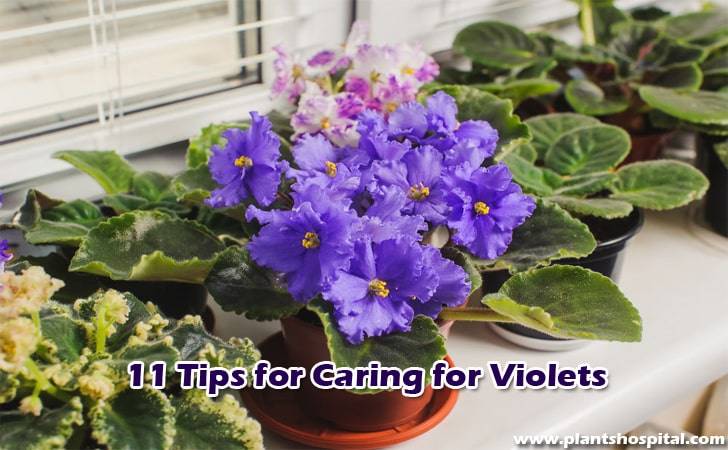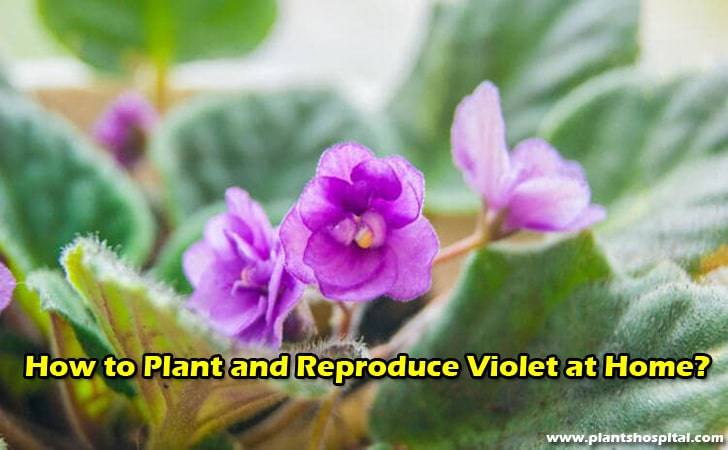Table of Contents
How to Care for Violets?
Violet Care At Home: Despite its simplicity, it shows itself immediately with its eye-catching beauty. Due to its small size and the conditions it needs, the violet flower is one of the most frequently looked at homes.
This humble flower, which is referred to as “a downcast purple violet” in the songs. If you want this unique flower to add color to your home, you need to obtain sensitive information such as violet care, soil, and watering, and act by these sensitivities.
The soil, where grows of flowers, is one of the elements that need attention. A more efficient soil structure can be obtained by mixing materials such as perlite, vermiculite, peat, and pumice.
- How To Grow Carrots At Home: 10 Tips Of Growing Carrots (5 Easy Step)
- 12 Best Ways Care for Orchids At Home: Types & Growing (With Video)

Types and Varieties of Violet Plant
Violet keeps its vitality for a long time when looked right and needs are met, and its colorful flowers do not fall out for a long time. As a potted flower, violet varieties with nearly 500 species worldwide can be grown almost anywhere in the world.
The violets are grown in World is limited to a few types:
- Purple violet has a special place as the most common variety.
- The type called glass violet is known for layered structure and two-color flower.
- Pansy, takes name from indecision on color.
- African violet is also among the common violet type in our country.
- Violet care is effortless and easy; often just watering is enough.
- It likes bright areas, but doesn’t like direct sunlight. It is recommended not to take daylight directly, but to take advantage of reflected light.
The choice of pot and soil is important. Since the violet flower roots are not long and proliferate horizontally, it is placed in flat pots, not deep pots. There must be a drainage hole under a violet pot as excess water accumulated can cause decay.
Watch Video: 11 Tips For Violet Care: How To Plant, Reproduce, Watering
How To Grow And Care For A Violet?
Violet Soil: A light and moisture-retaining soil is required for the flower’s roots to absorb oxygen it needs. Violet soil can be obtained by mixing a scale peat, a scale perlite or pumice, and a scale vermiculite.
Violet Pot: Violet pot is not deep but splayed. Since the roots of Violet do not go too deep and spread towards the environment, splayed pots are ideal.
Violets that can grow with a little soil in a large pot must be fertilized. Ready-made violet fertilizers can be bought and used, and during the flowering period, fertilizers with high phosphorus content must be used.
Heat, Light, and Humidity Rate: Violet loves sunlight; however, it is disturbed by direct sunlight. It should be behind the curtain or take advantage of reflected light.
Humidity is very important. If the humidity in the environment not sufficient or if air dries frequently due to the heating method, precautions must be taken with practices such as humidity trays. Glazed pots that protect more moisture are recommended.
Positioning at Home: Neither should be placed directly in front of the window nor far away. If it is to be placed close to the window, an east-facing window shot by the daylight that is not burning in the morning provides ideal lighting.
Violet, which is a tropical plant by origin, can grow healthy under indoor conditions in the World. Temperatures below 15 degrees and above 27 degrees are not good for violet care. Wind, harsh air currents are not friendly to violet. Violet pots are not placed in places that can be draught.

How to Plant and Reproduce Violet at Home?
As much as violet care, reproduction requires attention to the tricks. The method of separating Violet from the healthy roots of the plant is used to reproduce. The sections that emerge from the root and extend upwards from sprouts for new plants. These new violets can be planted in new pots and new violets can be grown.
It grows as much as the size of the violet pot, starting to overflow from the flower pot is recommended to go to pot change. If it is desired to remain small, it is also possible to keep in a small flowerpot. Decaying leaves and branches need to be cleaned frequently.
When flower pot is changed, new leaves come out quickly and the violet grows. When the leaves and stems grow in time, violet may stop giving flowers when it feels cramped.
It is recommended to clean the yellowed, faded leaves and make the plant comfortable. Dried leaves and branches also adversely affect the air circulation and can make the flower sick.
Leaf rooting method can also be used for violet propagation. Thanks to this method, which is made by cutting a healthy violet leaf, violet reproduction can be made without giving small offspring from the side of the violet.
Thus, it may be possible to reproduce a violet species you like by cutting only one or two leaves. In this method, the detached leaf is kept in water for a while and the roots that come out after a while can be seen with the naked eye.
After the violet soil is prepared and put in the pot, the rooted leaf is planted in the pot with the violet soil and the living water is poured. It is also possible to plant leaf directly into the soil; however, soaking in water may give more effective results.
- Cactus: Planting, Growing, And Watering | Can We Grow Cactus At Home?
- 3 Easy Ways To Grow Onions At Home: 3 Steps with Pictures & Video
Violet Watering Techniques: How Often Should Watering?
The frequency and shape of irrigation is just as important as the soil. For violet irrigation, it is recommended to use chlorine-free at room temperature. Hot or cold water that is not at room temperature can cause undesirable damage to the branches and leaves of the plant.
For more flowers to form, the top of the soil in the pot is allowed to dry before watering the violet. No decay occurs when the violet watering is made from a flowerpot.
For healthy irrigation, plenty of water should be added to the base, after 15 minutes the soil should be poured after drawing the soil. If water is to be given from the top, watering should be done on the soil, not directly on the plant.
Violet should be watered 2 times per week in hot summer and 1 time per week in winter. Too much watering and too little watering can have lethal consequences for the plant. One of the tricks of violet watering is to give the same amount of water each time.
Violet, who is very sensitive about the irrigation scheme, asks for the same amount of water each time. Timing, such as changes in quantity, can negatively affect the flower. It is generally recommended that it be watered during the same period and that there should be no changes in timing.

Benefits Of Violet Oil
Violet oil produced from its flowers and leaves has a special place in Mediterranean and Chinese culture. It is difficult to remove the oil, which has a sweet aroma. Only 1 kilogram of oil can be removed from 1 ton of violets.
- Therapeutic,
- Diuretic,
- It is known for its antiseptic properties.
The oil, which is said to be good for skin health, is said to be beneficial when applied with massage to painful and rheumatic areas, can also help to solve sleep problems with soothing effects.
Violet oil, which has different benefits, must be used consciously by taking the opinion of the doctor. It should be noted that otherwise may have unintended consequences.








